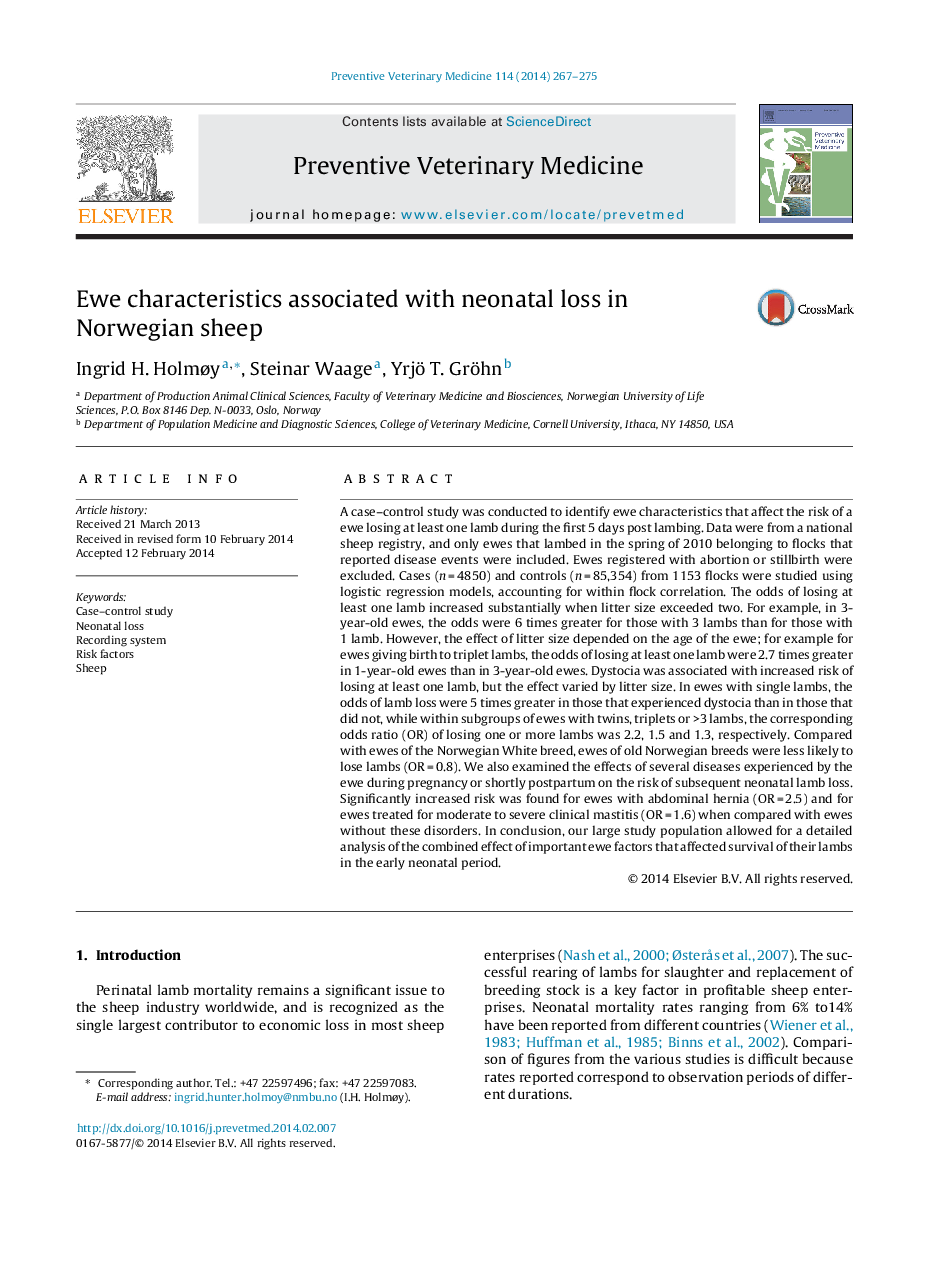| کد مقاله | کد نشریه | سال انتشار | مقاله انگلیسی | نسخه تمام متن |
|---|---|---|---|---|
| 2452448 | 1554177 | 2014 | 9 صفحه PDF | دانلود رایگان |
A case–control study was conducted to identify ewe characteristics that affect the risk of a ewe losing at least one lamb during the first 5 days post lambing. Data were from a national sheep registry, and only ewes that lambed in the spring of 2010 belonging to flocks that reported disease events were included. Ewes registered with abortion or stillbirth were excluded. Cases (n = 4850) and controls (n = 85,354) from 1153 flocks were studied using logistic regression models, accounting for within flock correlation. The odds of losing at least one lamb increased substantially when litter size exceeded two. For example, in 3-year-old ewes, the odds were 6 times greater for those with 3 lambs than for those with 1 lamb. However, the effect of litter size depended on the age of the ewe; for example for ewes giving birth to triplet lambs, the odds of losing at least one lamb were 2.7 times greater in 1-year-old ewes than in 3-year-old ewes. Dystocia was associated with increased risk of losing at least one lamb, but the effect varied by litter size. In ewes with single lambs, the odds of lamb loss were 5 times greater in those that experienced dystocia than in those that did not, while within subgroups of ewes with twins, triplets or >3 lambs, the corresponding odds ratio (OR) of losing one or more lambs was 2.2, 1.5 and 1.3, respectively. Compared with ewes of the Norwegian White breed, ewes of old Norwegian breeds were less likely to lose lambs (OR = 0.8). We also examined the effects of several diseases experienced by the ewe during pregnancy or shortly postpartum on the risk of subsequent neonatal lamb loss. Significantly increased risk was found for ewes with abdominal hernia (OR = 2.5) and for ewes treated for moderate to severe clinical mastitis (OR = 1.6) when compared with ewes without these disorders. In conclusion, our large study population allowed for a detailed analysis of the combined effect of important ewe factors that affected survival of their lambs in the early neonatal period.
Journal: Preventive Veterinary Medicine - Volume 114, Issues 3–4, 1 June 2014, Pages 267–275
